Religions in Allahabad: Exploring Faith in Prayagraj City
If you’ve ever heard about a city where millions gather to wash away their sins in sacred rivers, then you’ve probably heard whispers of Allahabad—today called Prayagraj. This northern Indian city glows with mystery and faith, pulling people from across the globe curious about its holy roots. Wondering which religion lives in the heart of Allahabad? The answer is way more layered and vibrant than a simple label. Let’s pull back the curtain on how religion shapes daily life, the cityscape, and even the air you breathe when you walk through its ancient lanes.
The Dominant Faith: Hinduism’s Ancient Roots
Step into the city, and Hinduism practically hums through the streets. At the heart of it all is the Triveni Sangam, the sacred meeting of the Ganges, Yamuna, and the mythical Saraswati rivers. This spot is where every 12 years, the Kumbh Mela erupts—a religious gathering so huge it’s visible from space! The last Kumbh Mela in 2019 pulled in a jaw-dropping 240 million visitors over 49 days, according to the Uttar Pradesh government. That’s more than the entire population of Russia. People come to Prayagraj hoping for spiritual rebirth, performing rituals, and bathing at the Sangam, believing all sins are washed away in the holy waters.
The city’s calendar might as well be a showcase of Hindu festivals. Diwali lights up the ghats, Durga Puja parades fill the air with music, Holi throws colors across ancient lanes, and every corner has a shrine whispering stories from the Ramayana and Mahabharata. The grand Anand Bhavan, once home to India’s Nehru-Gandhi family, is cheek-by-jowl with dozens of historic temples like the Alopi Devi Mandir and Bade Hanuman Mandir. If you’re visiting, don’t miss a sunrise at the Sangam—you’ll see priests, pilgrims, and regular locals all uniting under faith.
Yet, even though Hinduism steals the show in numbers—a 2011 Census found around 85% of the Prayagraj district’s population identified as Hindu—that doesn’t mean it’s a single-color tapestry. The faith here is layered with different traditions, castes, and even local deities you might not find anywhere else. From Vedic rituals to folk goddess worship, Hinduism in Allahabad is alive and evolving, mingling tradition with personal belief.
Islam in Allahabad: Stories of Faith and Community
Linger a bit longer, and you’ll notice the muezzin’s call rippling through certain neighborhoods at dawn. Islam has its own deep roots in Prayagraj, with Muslims making up around 13% of the city’s population as per the latest census. The history is rich—during the Mughal era, Allahabad was a prized city, and Mughal Emperor Akbar even named it Ilahabas in the late 16th century, meaning “Abode of God.” Grand mosques like the historic Jama Masjid and smaller, vibrant community mosques dot the city. Fridays mean bustling prayers, followed by street stalls lined with spicy biryanis and sweet jalebis, bringing neighbors together for lunch after the namaz.
Islamic culture spills out during festivals too. Eid-ul-Fitr and Eid-ul-Adha see people dressed in new clothes, exchanging sweets and warm hugs from dawn till after the evening prayers. Muharram brings processions in old quarters, where tazias (ornate replicas commemorating Imam Hussain) wind through chanting crowds. Little-known fact: the Qadri Mosque, built in the 17th century, hosts relics believed by some to be hair strands of Prophet Muhammad, closely guarded and revealed during special occasions.
The Muslim community has also shaped the city’s culture—think of Urdu poetry circles, Sufi qawwalis at shrines, and a food history blending Mughal and Awadhi flavors. Don’t leave without tasting the city’s famous kebabs and korma, often served at small, family-run eateries that have watched centuries roll by.
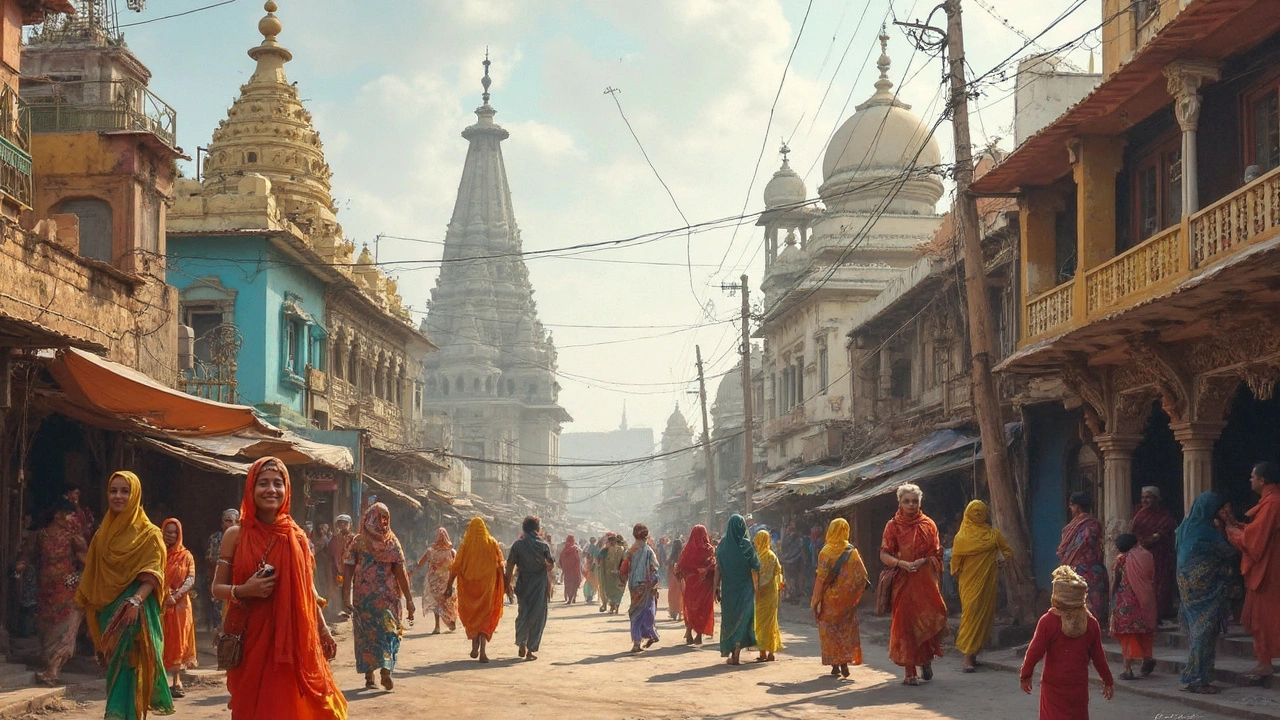
Other Religions: Christians, Sikhs, Jains and More
What really makes Prayagraj fascinating is how it’s never just one faith at a time. In the shadow of grand temples and mosques, you’ll stumble upon the old All Saints Cathedral, a striking Gothic structure dating back to 1887. If you want a nostalgic slice of colonial architecture, this church is your go-to. Christians here—about 1% of the population according to recent data—run long-standing schools and charities, from St. Joseph’s College to the 19th-century St. Thomas Anglican Church. Christmas is a delight; markets shimmer, and choirs sing through chilly December nights.
There’s also a lively Sikh community. The Gurudwara Pakki Sangat is not just a prayer hall, but a place where hot meals (langar) are free for everyone, regardless of background. During Gurpurabs (celebrations of Sikh Gurus’ birthdays), the city’s Sikh areas blossom with decorations, music, and joyful processions. Even smaller groups—like the Jains and Buddhists—have left their mark. Jain temples with marble floors and silent halls offer a peaceful break from city rush, while occasional Buddhist gatherings pay tribute to the city’s legendary ties with Ashoka the Great, who once ruled here.
Another curious strand is the presence of Parsees, Baha’is, and even a handful of Jews. Although their numbers are tiny, they add to the city’s unpredictable character. On any given day, spiritual talks, charity drives, and local festivals give the city an energy you just can’t bottle up.
How Religions Meet: Neighborhoods, Festivals, Daily Life
Walk through Allahabad and it feels like a festival is always brewing. Neighborhoods flow together with barely-noticed boundaries—one street lines up with temples and the next welcomes a mosque’s dome. During the Kumbh Mela, Muslims often open stalls serving water and food to Hindu pilgrims, while on Eid, Hindu neighbors join in the feasts. This cozy, mashed-up living often turns simple days into extraordinary ones. Even local politics, city planning, and schools show marks of this faith-layered DNA.
Here’s the real magic: rituals mingle. You might spot a Hindu attending a Christian wedding or a Muslim praying at the Sangam for deeply personal wishes. Mixed marriages happen quietly, and shared festivals like Holi and Diwali spill into all homes, so sometimes city menus for family dinners feature biryani next to laddoos. If you’re new in town, trust me, neighbors don’t let you feel left out during festivities. They’ll drag you in for puja, namaz, langar, or carol singing, whether you know the words or not.
The marketplace is a snapshot of togetherness. Old booksellers hawk Gita and Quran side by side, and sweet shops sell barfis for Diwali and sevaiyan for Eid under the same awning. Here’s what you might find useful when exploring:
- If you want to visit temples or mosques, dress modestly. Cover your head at Gurudwaras.
- Bargain politely in markets, but never on food offered as prasad or langar—it’s sacred.
- During Kumbh Mela, book everything ahead. Hotels and trains fill up a year in advance.
- Avoid taking photos inside places of worship unless you get permission.
This interlocking of rituals and friendly chaos is what keeps Allahabad vibrant and unpredictable, no matter how many centuries pass.
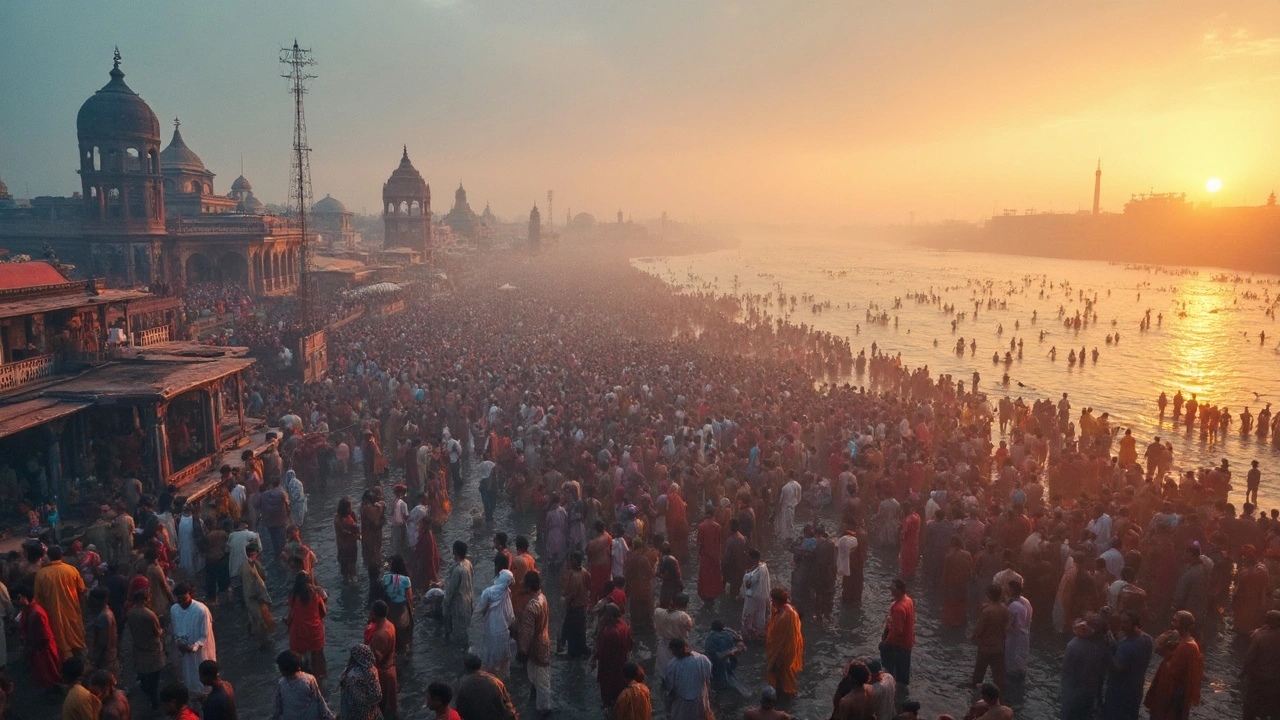
Quick Facts and Data on Faith in Allahabad
Curious about numbers and trends? Grab a look at this:
| Religion | Estimated Population (2011 Census) | Key Festivals | Famous Religious Sites |
|---|---|---|---|
| Hinduism | ~85% | Kumbh Mela, Diwali, Holi | Triveni Sangam, Alopi Devi Mandir, Hanuman Mandir |
| Islam | ~13% | Eid-ul-Fitr, Eid-ul-Adha, Muharram | Jama Masjid, Qadri Mosque |
| Christianity | ~1% | Christmas, Easter | All Saints Cathedral, St. Thomas Church |
| Sikhism | <1% | Gurpurab, Baisakhi | Gurudwara Pakki Sangat |
| Jainism, Others | small minority | Mahavir Jayanti, Paryushan | Jain Mandir, minor shrines |
Numbers only tell half the story, though. Trends show that younger generations are mixing faith and modern lifestyles openly—think teens who go straight from temple to a coffee shop, or wear a cross with their sari or hijab. Newer resident surveys suggest spirituality is growing beyond pure ritual, with yoga, environmental activism, and interfaith meetings gathering both the pious and the curious in new ways.
The government also invests big in managing religious events and infrastructure. Upgrades for the Sangam area, traffic plans for Kumbh, and new facilities for minority communities prove that faith is still at the center of city life—even as high-rise apartments and tech parks begin to change the cityscape. Sometimes that brings tension, but just as often, conversations brew over tea in back alleys, smoothing out differences and reminding everyone (sometimes with heated humor) that Allahabad’s spirit won’t be boxed in by narrow definitions.
Whether you’re a history buff, a traveler, or just a curious soul, the spirit of Allahabad—Prayagraj, in the local tongue—shows that faith here isn’t a single answer. It’s a living, joyful argument, mixing prayers, smells of street food, fierce debates, and celebrations that light up the night sky.
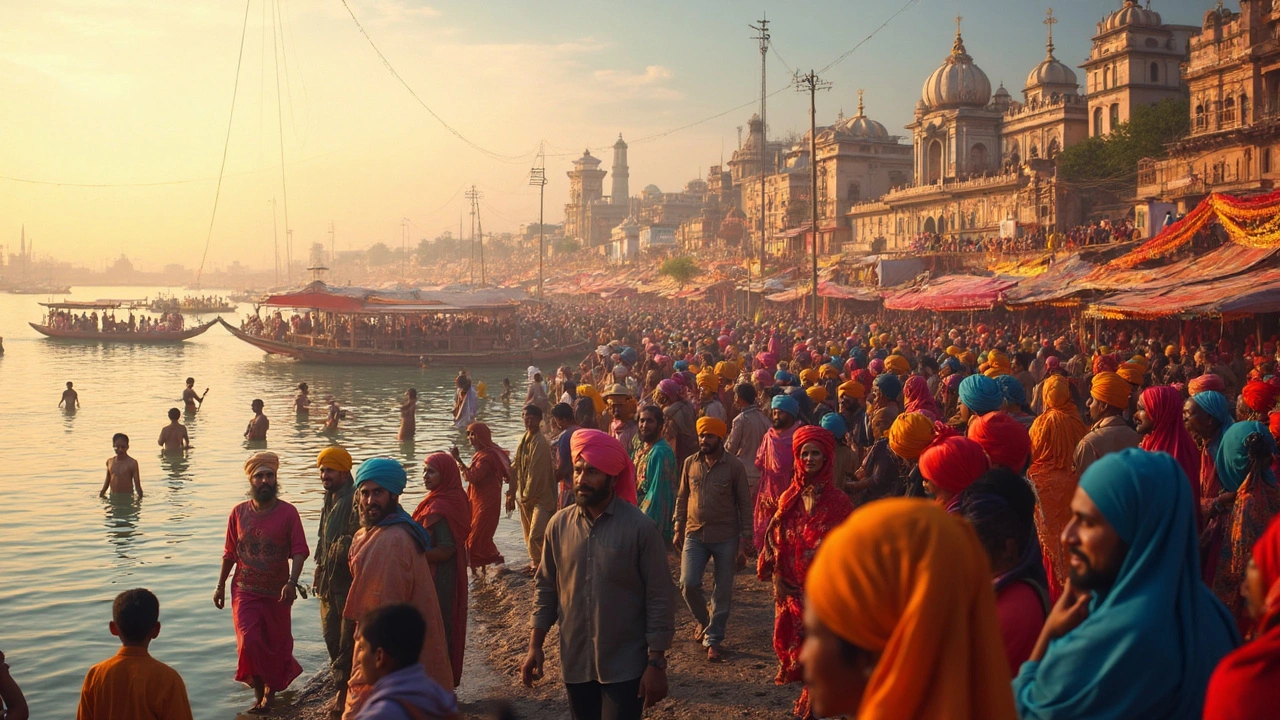
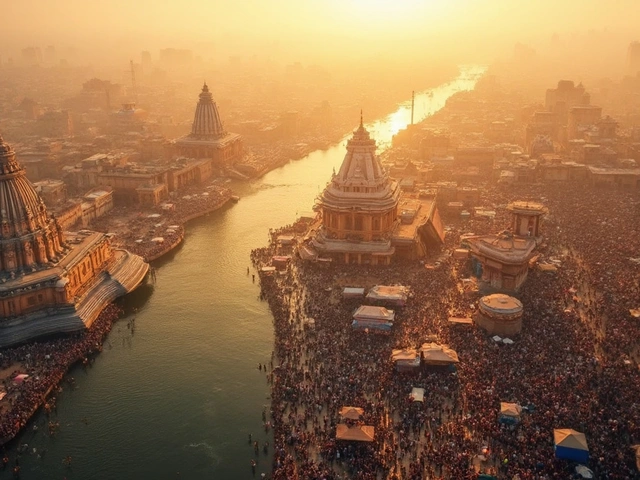
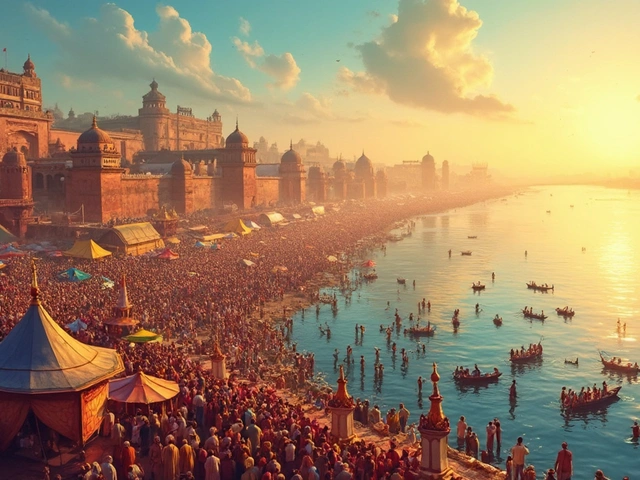
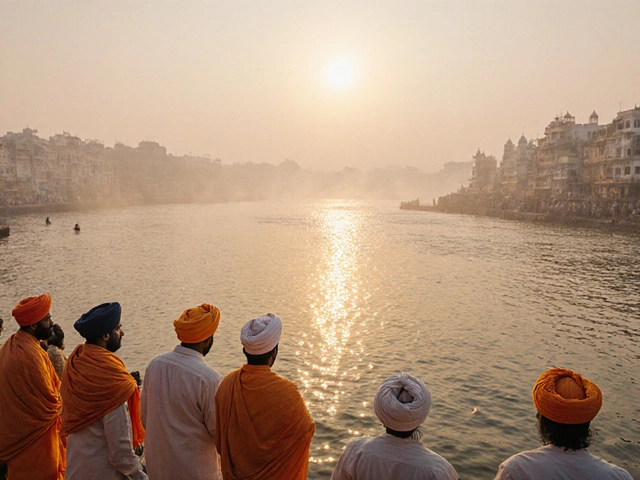

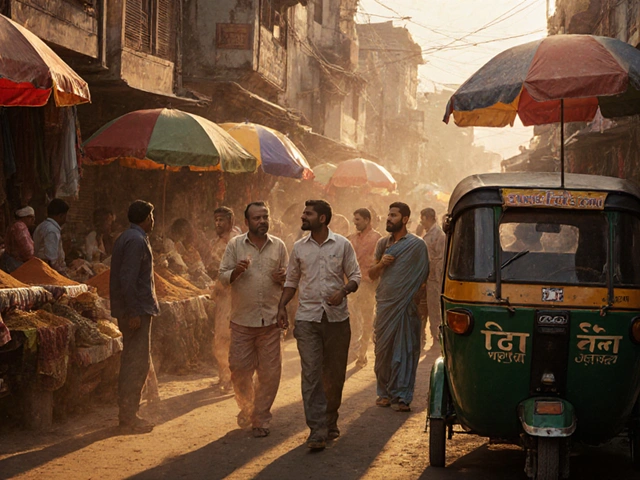
10 Comments
OONAGH Ffrench
July 17 2025Prayagraj is indeed a fascinating example of religious coexistence and cultural layering. What strikes me most is how the city manages to preserve ancient traditions while evolving in a modern landscape. The amalgamation of festivals and rituals here shows an intrinsic respect for diversity that many places could learn from. It would be interesting to analyze how these faiths influence the city’s social fabric beyond the spiritual realm.
Even the local customs seem to be subtly infused with the principles of multiple religions, creating a unique blend that characterizes the people. For visitors, immersing oneself in the city’s religious festivals is probably the best way to appreciate this diversity firsthand. Have you come across any narratives about how these communities interact on a daily basis?
Also, from a philosophical standpoint, how does the idea of faith in Prayagraj help people cope with modern challenges? I find that this intersection between spirituality and society often brings profound insight into human resilience.
Chris Atkins
July 18 2025Absolutely, this post brings out the essence of Prayagraj so well. The city really is a cultural mosaic where you can see multiple faiths living in harmony, at least on the surface. It’s pretty amazing to think about the sheer depth of history contained within the city limits.
From my experience visiting, the Kumbh Mela was a surreal experience, bringing millions together with a shared sense of spirituality. I’d argue that events like these are what really keep the spirit of Prayagraj alive and visible to the world. The way people from all backgrounds participate is a testimony to the city’s unique identity.
Curious, has anyone caught any interesting stories about lesser-known religious practices or temples in the city? I feel like those would add another layer to this exploration.
Wilda Mcgee
July 19 2025Oh I just love the way this article captures the vibrant spiritual energy of Prayagraj! It feels like a real kaleidoscope of faiths where every tradition colors the city’s identity in its own magical way. This fusion is what makes Prayagraj profoundly captivating, don’t you think?
What really strikes me is how these religious festivities create a communal rhythm that transcends the individual faiths—really weaving a beautiful story of collective human spirit. Such interactions remind us how vital empathy and openness are in today’s world.
I’d love to hear more about personal stories or reflections from inhabitants—how does living amidst this spiritual diversity shape their worldview? Also, exploring the architecture of the temples and mosques with their symbolic artistry sounds like a dreamy next step!
Truly, the city is a living tapestry of faith, and every thread tells a story of hope, challenge, and celebration.
Jen Becker
July 21 2025Honestly, I don’t buy into this whole portrayal of Prayagraj as some melting pot of unity. You always hear these glowing articles but rarely the tension underneath. Religion isn’t just about peace and harmony—it’s messy and complicated.
Sure, festivals are colorful and draw crowds, but does that really mean the communities are intertwined peacefully every day? I’ve read reports about conflicts and social divides that don’t get much airtime here.
It’s easy to romanticize spiritual beauty but let’s not ignore the underlying struggles and contradictions. This city might be unique, but perfection is another story.
Has anyone come across hard stories or controversies that challenge this rosy narrative?
Ryan Toporowski
July 22 2025Hey folks, I just want to add, I visited Prayagraj last year during Diwali, and the city was positively buzzing! The blend of lights, prayers, and joyous gatherings really brought home the point about diverse religious expressions. The way people from different backgrounds come together in celebration is heartwarming.
Also, as someone who enjoys cultural exchanges, I noticed how even the markets reflected this spiritual diversity through crafts and food. Small details like these often go unnoticed but speak volumes about how intertwined daily life is with faith.
Any recommendations on how a first-time visitor might respectfully engage with these religious spaces? I want to keep being a positive visitor.
😊🔥Samuel Bennett
July 24 2025Look, anyone who thinks Prayagraj is just a harmonious religious utopia hasn’t done their homework. There’s a lot more to it under the surface. Social dynamics are influenced heavily by religious identities, and areas of the city reflect segregation more than integration.
Also, you can’t overlook how political agendas exploit religious sentiments here to deepen divides. Articles like this often gloss over those elements, which is irresponsible in my view.
And about grammar in the post by the way—there were some real cringe-worthy errors, which only lessens the credibility.
I’d say be cautious and always cross-reference religious harmony claims with local realities.
Rob D
July 26 2025Oh please, the idea of seamless religious harmony in Prayagraj is just a pretty story sold to tourists. The truth is there’s always simmering tension between groups looking to assert dominance, whether subtly or overtly. The historical narratives about peace conveniently skip over conflicts and interventions.
I expect more critical reflection in such articles rather than the sugary sweet depiction. The reality is messy, stubborn, and often ugly.
This city is important but let’s not pretend it’s some flawless beacon of interfaith love.
saravana kumar
July 27 2025As someone from India, I appreciate the effort to highlight the spiritual diversity of Prayagraj. Indeed, it is one of the key cities showcasing India’s religious mosaic. However, I would add that beyond festivals, the daily interactions between communities reveal both harmony and friction. It cannot be painted in just one color.
The spiritual experience is deeply personal and collective, yet sometimes it is challenged by social realities like economic disparities and political influences. The narrative of unity should be balanced with these observations for a fair perspective.
But overall, Prayagraj’s essence as a spiritual hub is undeniable, drawing pilgrims and seekers alike.
Franklin Hooper
August 12 2025Interesting post yet I found the article a bit lacking in intellectual rigor. The overview barely scratches the surface of Prayagraj’s complex religious history. Where are the citations, or references to lesser-known sects that contribute notably to the city's culture? One could expect a more nuanced approach.
Furthermore, the vocabulary felt repetitive and the structure a bit amateurish. I’m curious if the author considered exploring syncretism or the philosophical dialogues that occasionally emerge among the city’s different faith groups.
More depth would make this piece truly valuable for readers seeking an academic insight rather than a travel brochure vibe.
Jess Ciro
August 16 2025Man, I get what you’re saying about Prayagraj, but I can’t help but feel uneasy when all these stories about religious harmony get paraded without acknowledging the darker underbelly. Every place has its demons, and that city’s no exception.
Sometimes I wonder if glorifying the festivals and ancient temples serves more to distract from ongoing issues beneath the surface. What about the voices of those marginalized or affected by communal tensions?
Still, seeing millions come together during Kumbh Mela is undeniably powerful. The paradox of sacred unity coexisting with underlying strife is what makes Prayagraj so intensely human in my eyes.